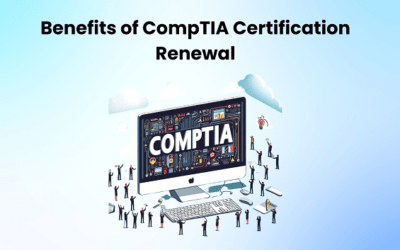In today’s digital landscape, driving website traffic is paramount for any business looking to thrive online. With ever-evolving algorithms and increasing competition, having a comprehensive strategy to boost your website traffic is essential. In this guide, we outline the most effective methods to help you achieve substantial growth in your website visitors.
1. Understand Your Audience: The Foundation of Traffic Growth
To drive quality traffic, you must first understand who your audience is. Conduct thorough research to identify your target demographic. Use tools like Google Analytics to gather insights on visitor behavior, preferences, and demographics. Create buyer personas to tailor your content and marketing efforts to the needs and interests of your potential customers.
Key Steps to Understand Your Audience:
- Analyze Demographic Data: Use analytics tools to get insights into the age, gender, location, and interests of your audience.
- Conduct Surveys and Feedback: Engage with your audience directly through surveys to understand their pain points and preferences.
- Monitor Social Media: Track conversations and trends on social media platforms to stay updated on what your audience is talking about.
2. Optimize for Search Engines: Mastering SEO
Search Engine Optimization (SEO) remains one of the most effective ways to drive organic traffic to your website. By optimizing your site for search engines, you improve your visibility in search results, making it easier for potential visitors to find you.
On-Page SEO Techniques:
- Keyword Research: Identify relevant keywords with high search volume and low competition using tools like Ahrefs, SEMrush, and Google Keyword Planner.
- Content Optimization: Integrate keywords naturally into your content, including headings, meta descriptions, and alt text for images.
- User Experience (UX): Ensure your website is mobile-friendly, fast-loading, and easy to navigate.
Off-Page SEO Strategies:
- Backlink Building: Earn high-quality backlinks from reputable sites in your industry through guest blogging, collaborations, and influencer outreach.
- Social Signals: Boost your content’s reach by sharing it on social media and encouraging others to do the same.
- Local SEO: Optimize for local search by claiming your Google My Business listing and gathering positive reviews.
3. Content Marketing: Creating Valuable, Engaging Content
Creating high-quality, engaging content is crucial for attracting and retaining visitors. Content marketing involves producing and distributing valuable content to attract a clearly defined audience.
Types of Content to Consider:
- Blog Posts: Regularly publish informative and engaging blog posts that address the interests and pain points of your audience.
- Videos: Create video content, such as tutorials, product demonstrations, and interviews, to engage visually-oriented visitors.
- Infographics: Design visually appealing infographics that simplify complex information and are easily shareable.
Content Marketing Best Practices:
- Consistency: Publish content consistently to keep your audience engaged and coming back for more.
- Quality over Quantity: Focus on producing high-quality content that provides real value rather than churning out low-quality posts.
- SEO Integration: Optimize your content for search engines by using targeted keywords, internal linking, and meta descriptions.
4. Leveraging Social Media: Amplify Your Reach
Social media platforms are powerful tools for driving traffic to your website. By leveraging social media effectively, you can reach a broader audience and increase engagement.
Effective Social Media Strategies:
- Platform Selection: Focus on the platforms where your target audience is most active, whether it’s Facebook, Instagram, LinkedIn, or Twitter.
- Engaging Content: Share a mix of content types, including blog posts, videos, infographics, and user-generated content.
- Consistent Posting: Maintain a regular posting schedule to keep your audience engaged and informed.
Social Media Engagement Tips:
- Interactive Content: Use polls, quizzes, and live videos to engage your audience.
- Respond to Comments: Foster a community by responding to comments and engaging with your followers.
- Use Hashtags: Utilize relevant hashtags to increase the visibility of your posts.
5. Email Marketing: Building and Nurturing Relationships
Email marketing is a highly effective way to drive traffic and build lasting relationships with your audience. By sending targeted, personalized emails, you can encourage repeat visits to your website.
Email Marketing Strategies:
- Build a Quality List: Focus on growing a list of engaged subscribers by offering valuable content and incentives.
- Segment Your Audience: Divide your email list into segments based on behavior, interests, and demographics to send targeted messages.
- Personalize Your Emails: Use personalization techniques to address subscribers by name and tailor content to their preferences.
Effective Email Campaigns:
- Newsletters: Keep your audience informed with regular newsletters featuring the latest content, news, and updates.
- Promotional Emails: Drive traffic through special offers, discounts, and promotions exclusive to your email subscribers.
- Automated Campaigns: Set up automated email sequences, such as welcome series and cart abandonment reminders, to engage subscribers at the right time.
6. Paid Advertising: Quick Wins for Traffic Boost
While organic methods are crucial, paid advertising can provide immediate results and drive significant traffic to your website. Platforms like Google Ads, Facebook Ads, and Instagram Ads offer powerful targeting options to reach your ideal audience.
Paid Advertising Tactics:
- Search Ads: Use Google Ads to bid on relevant keywords and appear at the top of search results.
- Display Ads: Create visually appealing ads that appear on relevant websites within Google’s Display Network.
- Social Media Ads: Run targeted ad campaigns on social media platforms to reach specific demographics and interests.
Maximizing ROI:
- A/B Testing: Continuously test different ad creatives, copy, and targeting options to find the most effective combinations.
- Monitor Performance: Use analytics tools to track the performance of your ads and make data-driven adjustments.
- Retargeting: Implement retargeting campaigns to re-engage visitors who have previously interacted with your website.
7. Influencer Partnerships: Expanding Your Reach
Collaborating with influencers can significantly amplify your reach and drive traffic to your website. Influencers have established credibility and a loyal following, making their endorsements highly effective.
Steps to Successful Influencer Marketing:
- Identify Relevant Influencers: Find influencers whose audience aligns with your target market.
- Build Relationships: Engage with influencers by commenting on their posts and sharing their content before proposing a partnership.
- Collaborate on Content: Work with influencers to create authentic, engaging content that resonates with their audience.
Types of Influencer Collaborations:
- Sponsored Posts: Pay influencers to create posts promoting your products or services.
- Product Reviews: Provide influencers with free products in exchange for honest reviews.
- Giveaways: Partner with influencers to run giveaways and contests, encouraging their followers to visit your website.
8. Analyzing and Adjusting: Continuous Improvement
To sustain and grow your website traffic, it’s crucial to continually analyze your performance and make necessary adjustments. Regular monitoring and optimization will ensure that your strategies remain effective and up-to-date.
Tools for Analysis:
- Google Analytics: Track visitor behavior, traffic sources, and conversion rates.
- Search Console: Monitor your website’s search performance and identify opportunities for improvement.
- Heatmaps: Use tools like Hotjar to understand how visitors interact with your website.
Optimization Techniques:
- Review and Refine: Regularly review your strategies and results to identify what’s working and what’s not.
- Stay Updated: Keep up with the latest SEO trends and algorithm updates to stay ahead of the competition.
- Experiment: Don’t be afraid to try new tactics and experiment with different approaches to see what yields the best results.
In conclusion, boosting your website traffic requires a multifaceted approach that combines SEO, content marketing, social media, email marketing, paid advertising, and influencer partnerships. By understanding your audience, optimizing your content, and continuously analyzing your performance, you can achieve significant and sustained growth in your website traffic.
If you want to read more information about how to boost traffic on your Website just visit –> UP Tech Time.








